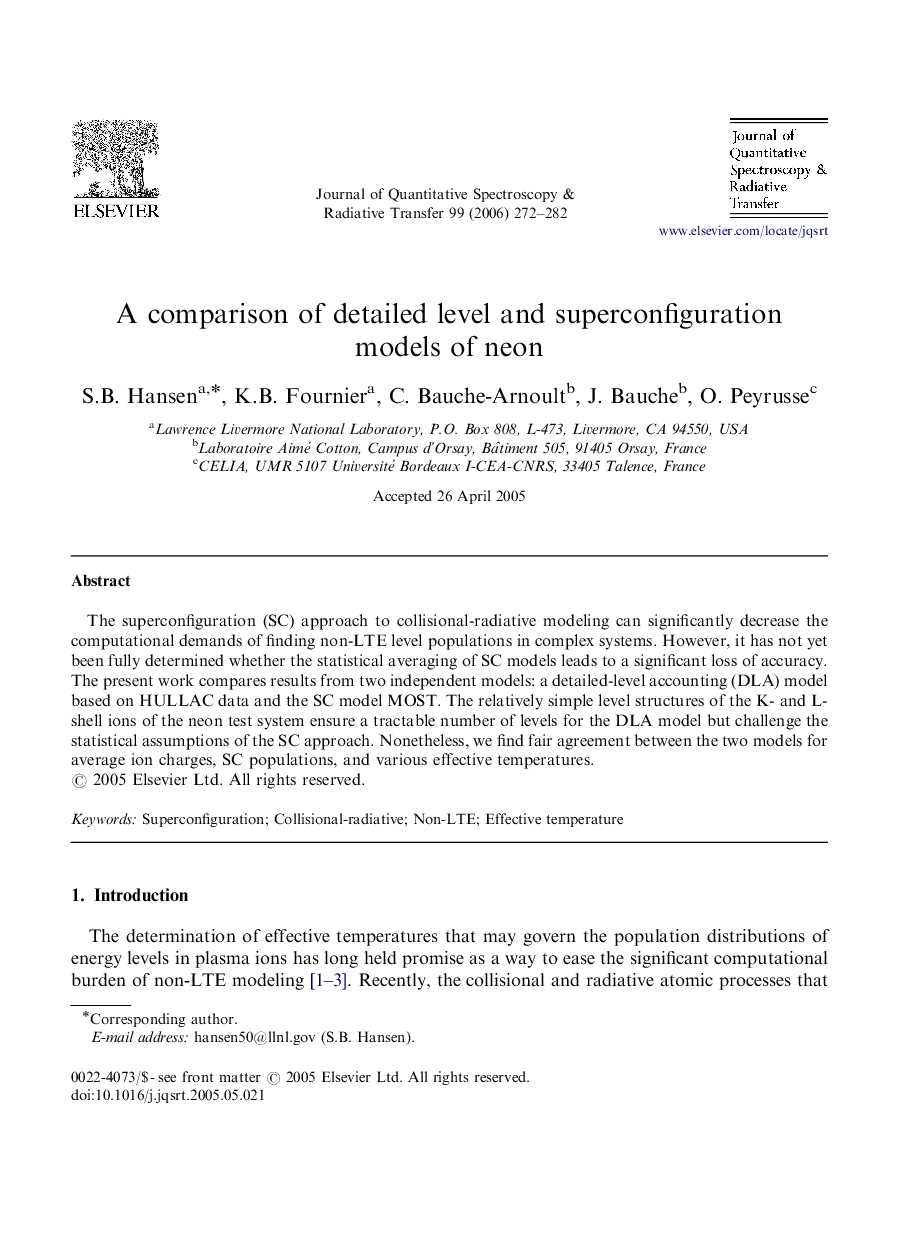| Article ID | Journal | Published Year | Pages | File Type |
|---|---|---|---|---|
| 5431101 | Journal of Quantitative Spectroscopy and Radiative Transfer | 2006 | 11 Pages |
The superconfiguration (SC) approach to collisional-radiative modeling can significantly decrease the computational demands of finding non-LTE level populations in complex systems. However, it has not yet been fully determined whether the statistical averaging of SC models leads to a significant loss of accuracy. The present work compares results from two independent models: a detailed-level accounting (DLA) model based on HULLAC data and the SC model MOST. The relatively simple level structures of the K- and L-shell ions of the neon test system ensure a tractable number of levels for the DLA model but challenge the statistical assumptions of the SC approach. Nonetheless, we find fair agreement between the two models for average ion charges, SC populations, and various effective temperatures.
